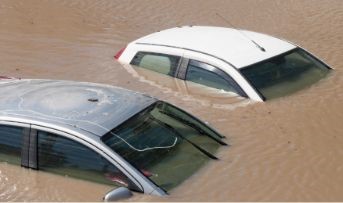Blog Details - Magma HDI

How to take care of your car during floods? 4th May 2019
Floods are one example of a disastrous natural calamity that can severely harm people's homes, businesses, and vehicles. A flood can damage your car's body, electrical system, or engine. Debris, rocks, and other things may be present in floodwater that might scratch, dent, or even smash the windows of your car.
As a car owner, taking precautions to safeguard your vehicle from floods is imperative. Precautions should be taken before, during, and after a flood because repairing or replacing your vehicle can be expensive.
We'll provide detailed tips in this article on shielding your automobile from harm during floods. In addition to it, online car insurance can safeguard your vehicle from water damage and offer financial support in an accident.
Understanding how to protect your car during floods is crucial, whether you reside in a flood-prone area or are visiting one. These suggestions can help you keep your vehicle in good working order for years to come while protecting it against water damage.
1. Place your car in a secure area
Moving your car to higher ground, ideally in a secure area, is one of the most important things to do when a flood is about to occur. This can shield your automobile from floodwater and reduce the likelihood of severe damage. If possible, park your vehicle on a raised surface or in a garage. Avoid parking your car under a tree since the branches could fall and harm it.
2. Unplug the battery
Combining water and electricity can be fatal. To avoid electrical harm, it is important to disconnect your car's battery. If you need help disconnecting the battery, ask a qualified mechanic for help.
3. Lock the doors and windows of your car
Another crucial action you should take during a flood is to seal the windows and doors of your car. Close any cracks using duct tape to stop water from entering your automobile. Allow a tiny opening for air circulation to avoid a moisture build-up inside the vehicle.
4. Steer clear of flooded roads
Driving through floodwater is extremely risky and can seriously harm your vehicle. Your car's electrical system, gearbox, and engine can all be damaged by floodwater. Stay off flooded roads and, if feasible, take a different route.
5. Verify the air filter in your car
Check your car's air filter if you're travelling through flooded areas. Debris can clog your air filter and stop airflow to your engine. Your engine may slow down due to a blocked air filter and even sustain lasting harm.
6. Dry the interior of your car
It's crucial to dry your car's interior as quickly as possible if it is exposed to floodwater. After removing any standing water with a wet/dry vacuum, remove any moisture with a dehumidifier. Mould and mildew can develop due to moisture, which could damage the interior.
7. Have an expert inspect your vehicle
Having your car checked up by a qualified mechanic after a flood is essential. They can examine your car's bodywork, electrical system, and engine for any damage. Any issues should be discovered immediately to stop them from worsening.
In conclusion, caring for your car during floods is essential to prevent damage and keep it safe. Park your vehicle in a secure location, disconnect the battery, seal your car doors and windows, avoid driving through floodwater, check your car's air filter, dry your car's interior, inspect your vehicle with a professional, and consider online car insurance. These tips can help protect your vehicle from flood damage and keep it running smoothly for years.
Finally, it's crucial to have car insurance, especially during natural disasters like floods. Online car insurance can help you protect your car from damage and provide financial assistance in case of any mishaps. Make sure to choose an insurance policy that covers flood damage to your vehicle.
Click HERE to learn more about online car insurance and its advantages.
Disclaimer: The information provided above is for illustrative purposes only. To get more details, please refer to policy wordings and prospectus before purchasing a policy.

